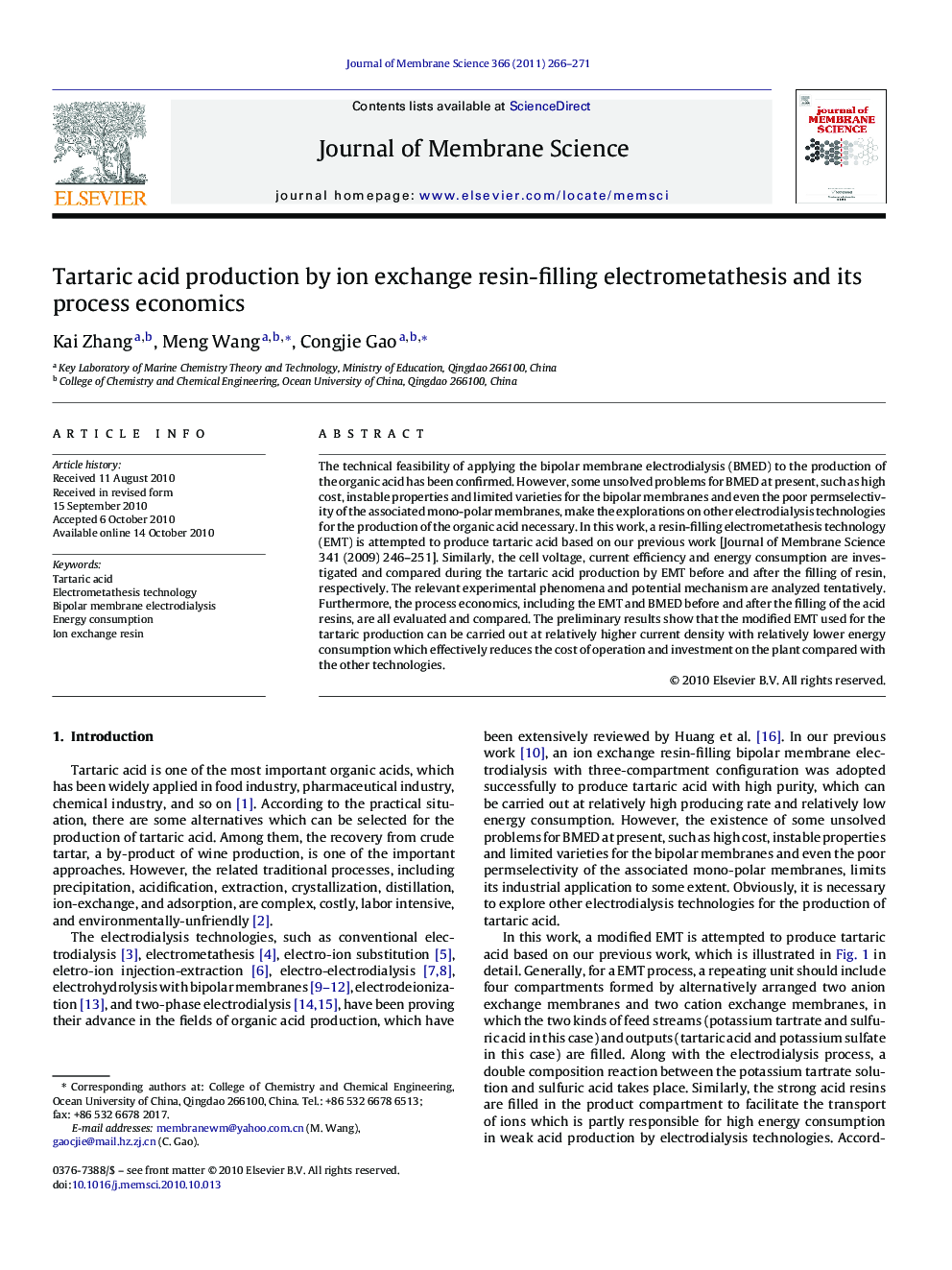| Article ID | Journal | Published Year | Pages | File Type |
|---|---|---|---|---|
| 635852 | Journal of Membrane Science | 2011 | 6 Pages |
The technical feasibility of applying the bipolar membrane electrodialysis (BMED) to the production of the organic acid has been confirmed. However, some unsolved problems for BMED at present, such as high cost, instable properties and limited varieties for the bipolar membranes and even the poor permselectivity of the associated mono-polar membranes, make the explorations on other electrodialysis technologies for the production of the organic acid necessary. In this work, a resin-filling electrometathesis technology (EMT) is attempted to produce tartaric acid based on our previous work [Journal of Membrane Science 341 (2009) 246–251]. Similarly, the cell voltage, current efficiency and energy consumption are investigated and compared during the tartaric acid production by EMT before and after the filling of resin, respectively. The relevant experimental phenomena and potential mechanism are analyzed tentatively. Furthermore, the process economics, including the EMT and BMED before and after the filling of the acid resins, are all evaluated and compared. The preliminary results show that the modified EMT used for the tartaric production can be carried out at relatively higher current density with relatively lower energy consumption which effectively reduces the cost of operation and investment on the plant compared with the other technologies.
Research highlights▶ The resin-filling EMT can be carried out with lower energy consumption. ▶ The formation of conducting chains facilitates the transport of the ions. ▶ This technology can be extended to the production of other organic weak acids.
